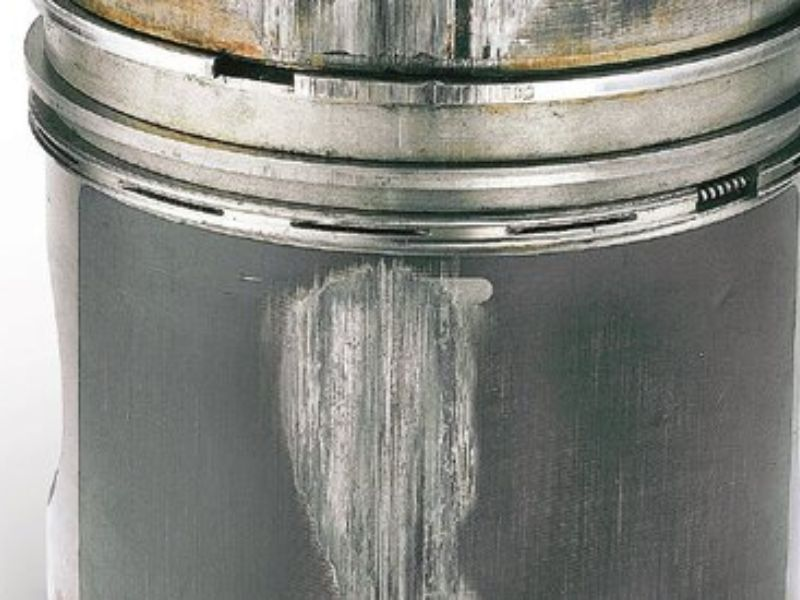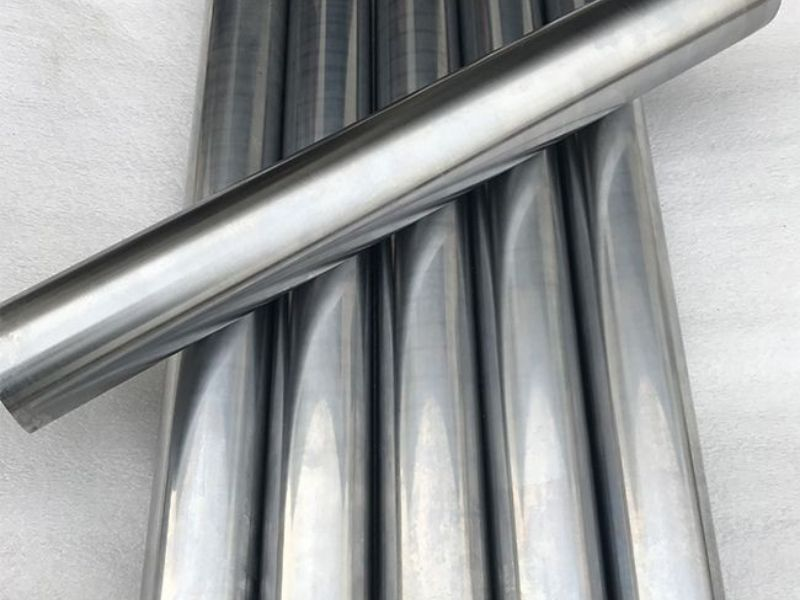When critical components of a hydraulic cylinder start to make noise, it's a sign that requires attention and may indicate a deeper mechanical issue. Often overlooked, hydraulic cylinder noise can be a precursor to mechanical inefficiency and impending failure. In this article, we will uncover five alarming facts about hydraulic cylinder noise that will not only shed light on the causes and effects of this problem but also guide you toward effective solutions.
One of the most common yet frequently overlooked causes of noise in hydraulic cylinders is the misalignment of their components. When the piston, rod, or cylinder body are not perfectly aligned, it results in uneven pressure distribution. This imbalance not only causes strange noises from the machinery but also leads to operational inefficiencies. Misalignment can result in uneven wear, increased friction, and even premature failures, turning a simple alignment issue into an expensive repair job.
Cavitation and aeration are terms that often come up in discussions about hydraulic cylinder noise, but what do they really mean? Cavitation occurs when the hydraulic fluid pressure drops below its vapor pressure, causing the formation of vapor bubbles. When these bubbles collapse, they produce a distinct popping sound, which is a clear indicator of cavitation. Aeration, on the other hand, happens when air gets trapped in the fluid, leading to noisy and erratic operation of the cylinder. Both of these phenomena not only contribute to the noise but also compromise the smooth functioning of the hydraulic system by reducing the fluid’s ability to transmit force effectively.
Like all mechanical parts, the components of a hydraulic cylinder are subject to wear and tear over time. Regular usage can lead to the degradation of seals, bearings, and other internal parts. This wear and tear often manifests as increased noise levels, signaling that the cylinder is not operating as smoothly as it should. Ignoring these sounds can lead to further damage and decreased performance, as worn components may not maintain the necessary pressure levels, leading to inefficiencies and potential system failures.

Noise in hydraulic cylinders can often be attributed to loose or damaged parts within the assembly. Over time, fasteners may loosen due to vibration and regular use, while damaged rods, pistons, or cylinder heads can produce unusual sounds. Regular inspection is crucial for identifying and tightening loose components or replacing damaged parts before they lead to more serious problems.
Contaminated hydraulic fluid is another, albeit less recognized, cause of noise. Particles in the fluid can disrupt the smooth operation of the cylinder, leading to abrasive noises. Additionally, water contamination can cause rust and corrosion inside the cylinder, further exacerbating noise issues. It's essential to ensure that the hydraulic fluid remains clean and to replace it according to the manufacturer’s recommended schedule to prevent these problems.
Proper lubrication is vital for the smooth functioning of hydraulic cylinders. A lack of lubrication can increase friction between moving parts, resulting in noise. This not only causes noise but also accelerates the wear and tear of components. Regularly checking and maintaining the correct level and quality of lubricants can help prevent such issues.
Fluctuations in hydraulic pressure or overloading the system can also result in noise. When a hydraulic cylinder is forced to operate beyond its designed capacity, it places undue stress on the components, leading to noise. It is crucial to monitor system pressure and adhere to the recommended operational limits to maintain the health of your hydraulic cylinder.
Malfunctioning or improperly adjusted valves are another source of noise in hydraulic cylinders. Valves control the flow and pressure of the hydraulic fluid, and when they do not function correctly, they can cause turbulence and noise. Regular checks and calibration of hydraulic valves are necessary for optimal performance.
Unusual sounds from hydraulic cylinders often serve as the first indication of underlying problems. These noises can signal issues such as internal leaks, misalignment, or component wear. Acting as an early warning system, these sounds provide an opportunity for proactive maintenance. Addressing these issues promptly can prevent minor problems from developing into major failures.
The efficiency of a hydraulic cylinder relies heavily on the smooth operation of its components. When noise is present, it typically indicates excess friction, misalignment, or contamination, all of which can decrease the system’s efficiency. This inefficiency not only results in higher energy consumption but can also affect the precision and responsiveness of the machinery, thereby impacting overall productivity.
Continuous operation of a noisy hydraulic cylinder can have detrimental effects on the long-term health of the machinery. Persistent noise usually means that the cylinder is operating under stress or strain. This can accelerate the wear and tear of components, leading to more frequent breakdowns and a reduced lifespan of the equipment. Moreover, unresolved noise issues can result in catastrophic failures, requiring expensive repairs or even complete replacement of the hydraulic system.
Skilled technicians and engineers often use their trained ears to interpret the noises coming from hydraulic systems. Different sounds can indicate different issues; for example, a knocking sound might suggest cavitation, while a high-pitched whine could point to a venting or pressure problem. By listening to and analyzing these sounds, professionals can quickly pinpoint potential problem areas even before conducting a physical inspection.

1.Precision Alignment Tools: The adoption of laser alignment tools has grown increasingly popular for addressing misalignment issues in hydraulic cylinders. These advanced tools offer exceptional accuracy in aligning cylinder components, ensuring that all parts function in perfect unison. This precision not only greatly reduces noise but also enhances the overall performance and lifespan of the cylinder by preventing uneven wear.
2.Advanced Wear-resistant Materials: Incorporating advanced wear-resistant materials into hydraulic cylinders is a significant advancement in noise reduction. Chrome-plated rods, known for their durability and corrosion resistance, can significantly decrease the friction that generates noise. Similarly, polyurethane seals, which are more durable than traditional materials, can withstand higher pressures and are less susceptible to wear. By minimizing friction and wear, these materials not only reduce noise but also extend the service life of the cylinder components.
3.Vibration Damping Mounts: These mounts absorb and isolate vibrations, preventing them from being transmitted through the machinery, thereby reducing noise levels. This solution is particularly effective in machinery where vibration is a recurring issue.
1.Pressure Relief Valves: The correct setting and operation of pressure relief valves are crucial for managing pressure surges in hydraulic systems. These sudden increases in pressure can not only produce alarming noises but also jeopardize the structural integrity of the hydraulic cylinder. Appropriately calibrated pressure relief valves ensure that the system operates within its intended pressure range, thereby preventing noise caused by overpressure and enhancing the safety and reliability of the system.
2.Pulsation Dampeners: Pulsation dampeners are key components that can be added to hydraulic circuits to reduce pressure fluctuations. These devices absorb and smooth out the pulsations in the hydraulic fluid, resulting in a more consistent flow and decreased noise. By stabilizing the pressure, pulsation dampeners not only lower noise levels but also prevent wear and tear on hydraulic components due to pressure surges.
1.Advanced Lubricants: Using high-performance hydraulic fluids is an effective and straightforward approach to tackling noise issues. These advanced lubricants have superior properties that improve lubrication, reducing friction between moving parts that could generate noise. Additionally, their enhanced thermal stability and resistance to oxidation help maintain the overall health of the hydraulic system.
2.Regular Fluid Analysis and Replacement: Adhering to a strict schedule for analyzing and replacing hydraulic fluids is vital for keeping the system clean and efficient. Regular testing of the hydraulic fluid can identify contaminants, water, and air bubbles that contribute to noise and inefficiency. Timely replacement or treatment of the hydraulic fluid, based on these analyses, can significantly reduce noise and prolong the life of the hydraulic components.
1.Predictive Maintenance Technologies: The incorporation of smart sensors and IoT (Internet of Things) devices into hydraulic systems ushers in a new era of maintenance strategies. These technologies facilitate the continuous monitoring of various parameters, such as pressure, temperature, and fluid levels. By analyzing this data, predictive maintenance systems can anticipate potential issues before they become apparent, including those that generate noise. This proactive approach not only minimizes unexpected downtime but also ensures that the hydraulic system operates quietly and efficiently.
2.Noise-canceling Technologies: A revolutionary advancement in managing noise from hydraulic cylinders is the development of noise-canceling technologies. These innovative systems work by identifying the specific sound frequencies produced by the hydraulic cylinder and emitting counter frequencies to neutralize the noise. Inspired by the technology used in noise-canceling headphones, this solution provides a novel method for reducing operational noise, contributing to a more pleasant and compliant working environment.
1.Maintenance Costs: Noise often indicates underlying issues that, if left unaddressed, can result in expensive repairs. For example, cavitation can damage components, leading to costly replacements.
2.Downtime Costs: Downtime caused by hydraulic cylinder failures can lead to significant production losses. In industries where equipment uptime is critical, the cost of unplanned downtime can be substantial.
3.Decreased Equipment Lifespan: Continuous operation of noisy hydraulic cylinders accelerates wear and tear, reducing the overall lifespan of the equipment. This necessitates more frequent replacements, increasing long-term costs.
1.Energy Inefficiency: Hydraulic systems affected by noise issues often operate inefficiently, consuming more power and contributing to higher carbon emissions.
2.Fluid Leakage: Certain noise issues can indicate leaks, which can cause hydraulic fluid to enter the environment, potentially leading to soil and water contamination.
3.Increased Waste: The premature failure of components results in more frequent replacements and disposals, contributing to increased waste and resource consumption.
Understanding and addressing hydraulic cylinder noise is not merely about ensuring smooth operation or meeting safety standards. Instead, it involves adopting a comprehensive maintenance approach that prioritizes prevention over repair, efficiency over inefficiency, and sustainability over short-term gains. By paying attention to the "ticking" sounds made by machinery, we can prevent potential breakdowns and thereby ensure a more reliable, productive, and sustainable industrial environment.